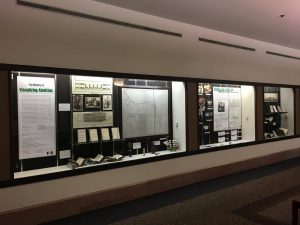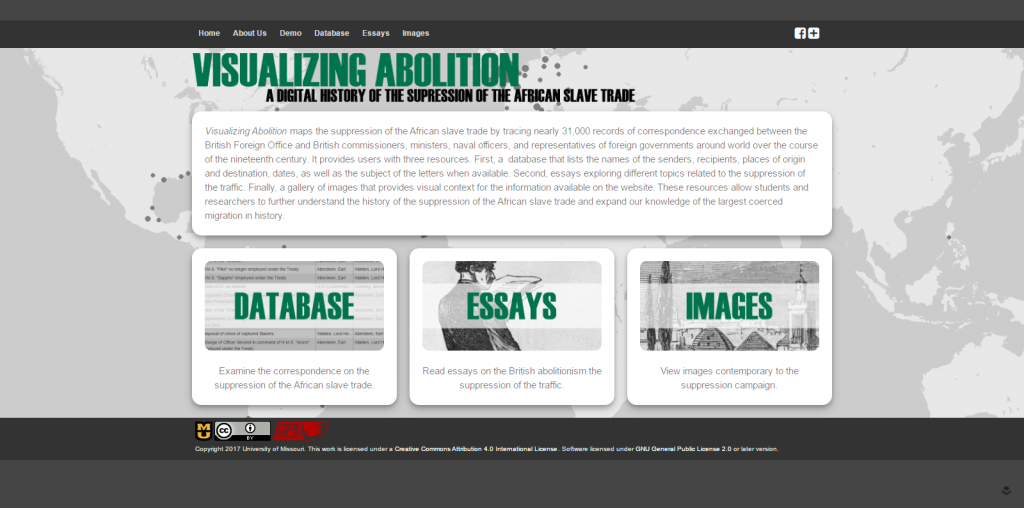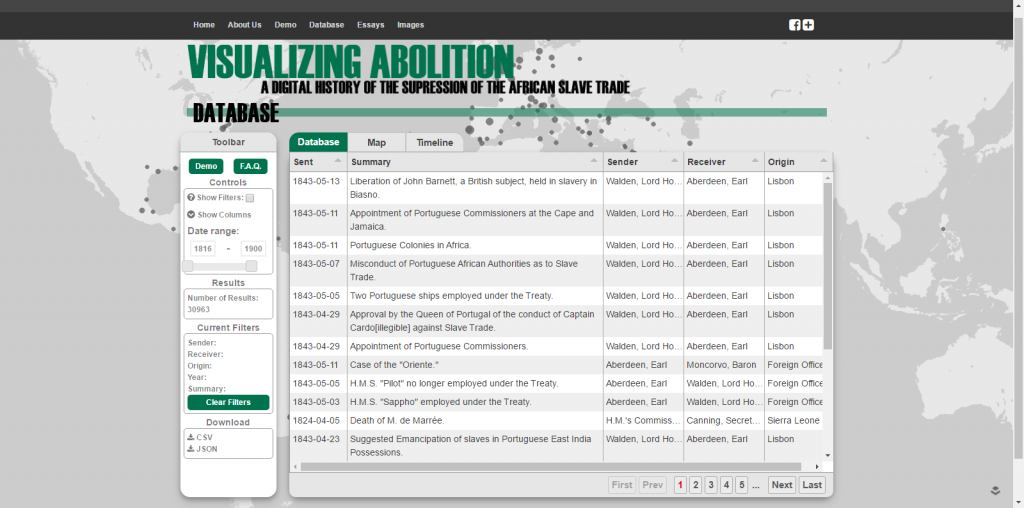As a historian of the African slave trade, Daniel Domingues has researched the rise and growth of the trade, but never how it ended.

A Visualizing Abolition display is up in Ellis Library through May 16.
“The slave trade to America lasted for almost four centuries, but ended quickly in the mid-19th Century,” Domingues says. “It was because of a shift in our way of thinking and looking at slavery as immoral and wrong.”
Now, through the new Arts, Social Sciences and Humanities (ASH) Scholars program, the suppression of the trade is being explored. The ASH Scholars program is a collaborative effort by the Office of Undergraduate Research and the Honors College in which teams of undergraduate students work with faculty members on innovative humanities and social science research. The program funded two research projects in 2016-17—its inaugural year—including Visualizing Abolition, which explores the suppression of the slave trade.
Domingues, an assistant professor of African History, and Linda Reeder, an associate professor in MU’s history department, are leading this project.
Visualizing Abolition maps the suppression of the African slave trade by following the correspondence exchanged between the British Foreign Office, British commissioners, minister, and naval officers, and representatives of foreign governments around the world in the 19th Century. In mapping the suppression of the slave trade, the researchers are looking at how the perception of slavery and the slave trade changed over time.
Undergraduates are involved in all stages of the research project. They are collecting data by going through the correspondence and gathering information such as place of origin, names of sender and receiver and the date. Students enter the information into a database and collect images from periodicals, then examine the information and images and write analysis essays.
A major component of this study is the development of a website where users can explore the database of letters and examine the flow of correspondence. The website includes essays along with images, interactive maps and graphs that provide visual context to the information.
Kelsey Rogers had no prior research experience, but Visualizing Abolition caught her attention.
“It involves both my humanities training and my self-taught skills in graphic design and web design,” says Rogers, who was involved in creating the digital portion of the project. She designed and coded the website, database and visualization tools.
“There is a large community of creators freely sharing their work to allow for innovative websites like ours to exist,” Rogers says. “The various ways one can interact with the same database and create a wide, yet deep, context to history has been wonderful to see.”
The group has shared their research on campus, at the Missouri State Capitol and around the country, most recently at the National Conference on Undergraduate Research held in Memphis, Tennessee, earlier this month.
“Seeing my team members share their specific research, whether as papers or exhibits, in creative and insightful ways has been so gratifying,” says undergraduate researcher Katie Ziegler. “Sharing the project on a team level and promoting in outside networks has been, albeit intensive, enjoyable and stimulating.”
The ASH Scholars program emphasizes a team approach of research, scholarship, design and/or artistry, in academic areas where teams are not typical. The teams consists of students from a variety of majors. Visualizing Abolition, for example, includes anthropology, history and journalism majors along with others.
“There have always been a lot of research opportunities that focused on the sciences. The arts, the humanities and the social sciences were being neglected,” Domingues says. “Thanks to the ASH Scholarship, that is changing. There is so much interest and it is of fundamental importance to have this program available.”
Faculty and student interaction is expected in the program as faculty mentors and students meet as a group at least once a week and the researchers are working continuously in smaller teams. Undergraduates on the research team receive a $2,000 scholarship for the duration of the academic year, but take more than just the scholarship from the experience.
“I have been able to greatly improve my coding knowledge and abilities,” Rogers says. “I learned a variety of languages and platforms and learned how to integrate multiple styles of data visualization and contextualization into one coherent website. It has been an invaluable experience.”

